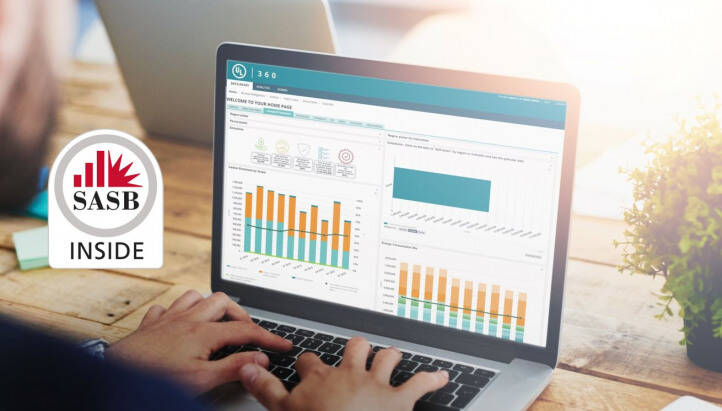Investors, lenders, insurance underwriters and other providers of financial capital are increasingly attuned to watch the impact of environmental, social and governance (ESG) factors on the financial performance of companies, driving the need for standardized reporting of ESG data.

What is SASB?
The Sustainability Accounting Standards Board (SASB) is a nonprofit organization, founded in 2011 to develop sustainability accounting standards designed specifically for investors requiring industry-specific sustainability information that is material to companies’ financial valuations. SASB standards are used by companies around the world to communicate their performance to investors through a variety of disclosure channels, including annual reports, company websites, sustainability reports and more.
They are also used by investors to assess the financially material sustainability topics for companies and to benchmark company performance on industry specific ESG topic areas to assess impacts on financial performance.
Why should I report SASB industry standards?
SASB standards provide company-level ESG data that is comparable, consistent and financially material — enabling investors to make better investment and voting decisions. In reporting against your SASB industry standard you significantly increase the ease with which investors can evaluate your company’s ESG performance. This can mean additional investment from equity investors increasing your company share price and lowering cost of funding from debt investors.
Company SASB reporting is also picked up by ESG research and ratings agencies such as Sustainalytics and MSCI, which provide third-party assessments of company ESG performance to investors and can, in some circumstances, increase your company’s rating. Increasingly these ratings, especially where publicly reported, are being used by B2B business partners to assess companies’ ESG performance as part of supplier risk management, thus SASB reporting can also improve your B2B relationships.
How do I start reporting with the SASB standards?
SASB standards differ by industry and, in order to report to the relevant SASB standard for your company, you should do the following:
- Search the SASB website to see which SASB industry standard has been assigned to your company or, if it is not listed view your industry peers, to understand relevant standards.
- Download the relevant industry standard from SASB.
- Review the disclosures in the SASB standard with your senior management team to assess the relevance of the standard to your business as some may not be relevant or multiple standards may apply to your business.
- Determine the SASB disclosures aligned for your business and assess where this quantitative and qualitative data can be sourced from within your business and where you have gaps.
- Collect, collate and report on the data using UL’s 360 sustainability essentials software solution.
- Engage with your large investors to understand their point of view and value hypotheses.
UL’s best-in-class sustainability reporting software, 360 Sustainability Essentials, gives you everything you need to collect, manage and report to your industry-specific SASB standard. Additionally, our experts can guide you through the process of identifying relevant industry specific standards for your business.
How does UL 360 software support SASB reporting?
UL licenses all 77 of the SASB industry specific standards in our software solutions allowing you to easily track, manage and report on SASB data.
Data collection: Collect quantitative and qualitative data from across your business using predefined SASB industry templates specific to your business. Validate the quantitative data received using automated tolerance checks and advanced workflows
Reporting: Predefined templates allow you to create industry specific SASB reports in a range of formats for different audiences
Performance management: Period-to-period tracking and breakdowns so you can understand drivers of performance
Audit: Maintain records to easily provide evidence to independent auditors of your nonfinancial information
N.B. The information contained in this entry is provided by the above supplier, and does not necessarily reflect the views and opinions of the publisher


